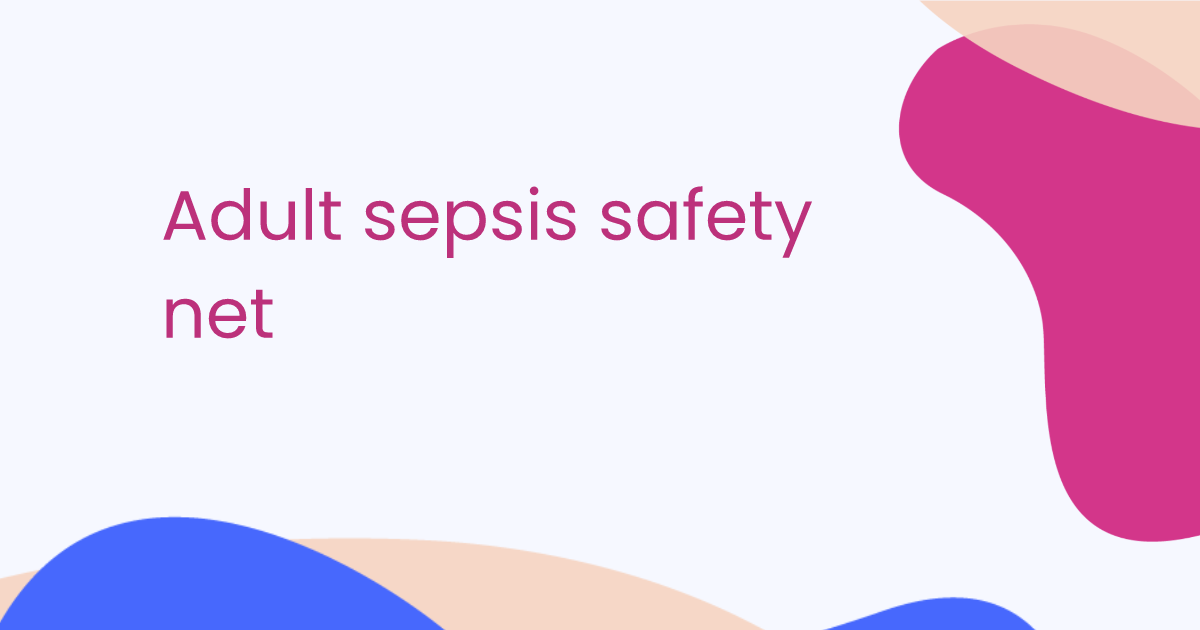Sepsis-Sicherheitsnetz für Kinder
Begutachtet von Dr. Hayley Willacy, FRCGP Zuletzt aktualisiert von Dr. Krishna Vakharia, MRCGPZuletzt aktualisiert am 11 Feb 2023
Erfüllt die Anforderungen des Patienten redaktionelle Richtlinien
- HerunterladenHerunterladen
- Teilen Sie
- Sprache
- Diskussion
In this series:SepsisAdult sepsis safety net
Sepsis ist eine lebensbedrohliche Erkrankung - die Symptome können vage oder schwerwiegend sein. In diesem Merkblatt erfahren Sie, worauf Sie achten müssen und wann Sie Hilfe suchen sollten.
This leaflet was originally produced in collaboration with The UK Sepsis Trust - it has since been updated. This charity is committed to raising awareness of sepsis and improving the care of patients with sepsis.
Sepsis is a life-threatening condition and needs emergency treatment in hospital. The symptoms of sepsis may be vague and not specific. If your child is unwell with either a fever or very low temperature (or has had a fever in the last 24 hours), just ask: Could it be sepsis?
Call an ambulance immediately - 999 if in the UK - If your child has any of the following:
Atmet sehr schnell.
Has a 'fit' or convulsion.
Hat eine feuchte, kalte Haut und sieht blau, blass oder fleckig aus (gesprenkelt).
Has a rash that does not fade when you press it. The glass test is a good way to work this out - press a clear glass against the rash - if the rash does not fade or disappear, call an ambulance immediately.
Ist sehr lethargisch oder schwer zu wecken.
Fühlt sich bei Berührung ungewöhnlich kalt an.
Other severe symptoms to look out for - again, call an ambulance if your child:
Has severe shivering.
Has severe muscle pain or tummy (abdominal) pain.
Is confused or disorientated (not sure where they are).
Has slurred speech.
Is feeling very dizzy or faint
Is not passing urine all day (18 hours for older children and adults; 12 hours for younger children)
Any child under 5 years of age with the symptoms below may have sepsis - you must seek immediate medical attention (call your GP or go to your nearest emergency department) if your child:
Is not feeding.
Is vomiting repeatedly.
Hasn't had a wee or a wet nappy for 12 hours.
If your child does have sepsis they may also have other symptoms of infection such as a flu-like illness (cough, fever, muscle aches and joint pains) or diarrhoea and vomiting.
Early treatment saves lives. In the UK, call 999 if you are very concerned. Call your GP immediately if you're concerned, but don't think your child needs to go straight to hospital. If there is any delay in talking to a doctor then call for an ambulance immediately.
Patientenauswahlen für Meningitis und Sepsis

Infektionen
Sepsis-Sicherheitsnetz für Erwachsene
Sepsis ist eine schwere Erkrankung, die tödlich enden kann, wenn sie nicht frühzeitig erkannt wird. Die Anzeichen und Symptome können vage oder schwerwiegend sein. In diesem Merkblatt erfahren Sie, auf welche Symptome Sie achten sollten.
von Dr. Krishna Vakharia, MRCGP

Infektionen
Meningokokken-Infektion
Neisseria meningitidis, auch bekannt als Meningokokken, ist ein Keim (Bakterium). Eine Infektion mit Meningokokken ist selten, aber sie ist sehr ernst und kann lebensbedrohlich sein.
von Dr. Colin Tidy, MRCGP
Weiterführende Literatur und Referenzen
- Jawad I, Luksic I, Rafnsson SB; Assessing available information on the burden of sepsis: global estimates of incidence, prevalence and mortality. J Glob Health. 2012 Jun;2(1):010404. doi: 10.7189/jogh.02.010404.
- Sepsis - Erkennung, Diagnose und frühzeitige BehandlungNICE-Leitlinie (Juli 2016 - aktualisiert Januar 2024)
Lesen Sie unten weiter
Artikel Geschichte
Die Informationen auf dieser Seite wurden von qualifizierten Klinikern verfasst und von Fachleuten geprüft.
Nächste Überprüfung fällig: 6. Januar 2028
11 Feb 2023 | Neueste Version
7. Dezember 2017 | Ursprünglich veröffentlicht
Verfasst von:
Dr. Colin Tidy, MRCGP

Fragen, teilen, verbinden.
Stöbern Sie in Diskussionen, stellen Sie Fragen, und tauschen Sie Erfahrungen zu Hunderten von Gesundheitsthemen aus.

Fühlen Sie sich unwohl?
Beurteilen Sie Ihre Symptome online und kostenlos
Sign up to the Patient newsletter
Your weekly dose of clear, trustworthy health advice - written to help you feel informed, confident and in control.
By subscribing you accept our Privacy Policy. You can unsubscribe at any time. We never sell your data.